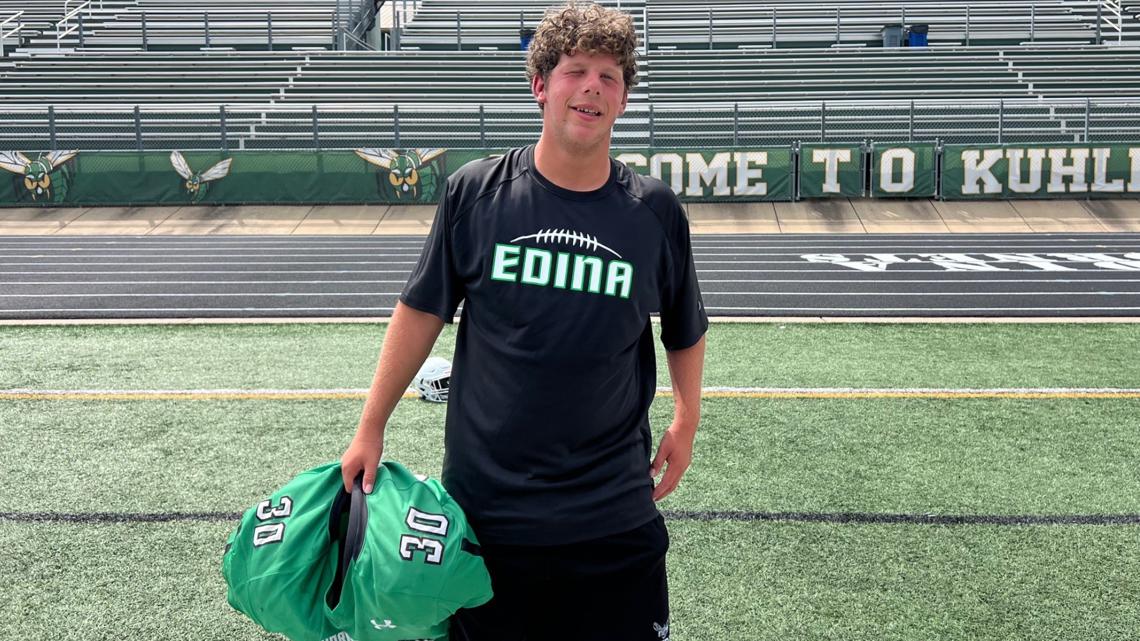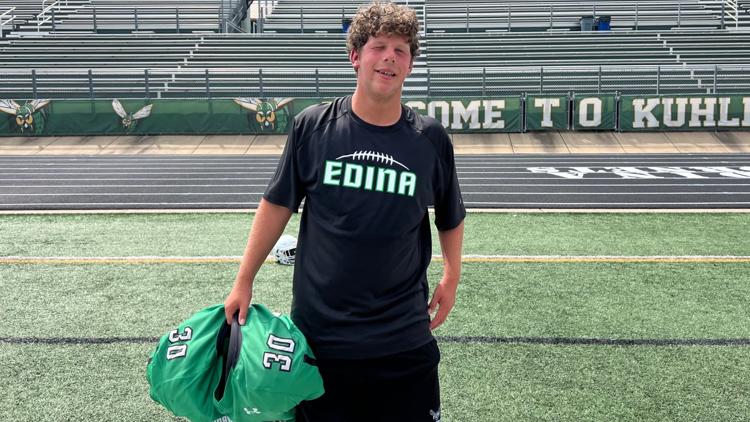Kare11
Minneapolis announces historic number of deeply affordable homes


In total, there were 919 closings on deeply affordable and affordable housing in 2022.
MINNEAPOLIS — City and housing leaders say they’re making history in the number of affordable and deeply affordable homes being built in Minneapolis.
Deeply affordable means units that are available at or lower than 30 percent of the area median income. At a press conference Wednesday, Mayor Jacob Frey said he’s prioritized producing such housing since his first day in office.
“Now about 5 years later, we are producing more affordable housing than we ever have in our city’s history,” Frey said. “Where we have been investing is having an impact.”
According to city data, there were 264 closings on deeply affordable housing for rent in 2022 compared to 41 average annual closings between 2011 and 2018.
“We are producing six times, more than six times the amount deeply affordable, low-income housing than we did in those 7 years,” Frey said.
Housing leaders say 30 percent AMI or under can translate to a family of four making about $35,000 a year.
Many of the deeply affordable units developed in recent years are in council member Jeremiah Ellison’s ward, including Wellington Management’s Currie Commons in the Harrison neighborhood.
“In 2017, when I was first running it was a little bit controversial to say in north Minneapolis that you wanted to invest more in affordable housing,” Ellison said. “It was seen as where all the affordable housing already was.”
Ellison says, after that, rents increased and incomes did not.
“Obviously we couldn’t have seen the economic shortfall that was created because of COVID,” he said. “A lot of things that we couldn’t have foreseen but the one thing that we did, the one thing that our staff did and that we did as a council and invested in as a city was affordable housing – at mixed levels – but yes, even in north Minneapolis.”
The other levels, 31 to 60 percent AMI, are considered affordable whereas the 30 and under is deeply affordable. In total, there were 919 deeply affordable and affordable closings in 2022. Mayor Frey says $320 million has gone into it all since 2019.
“We have very deliberately put money not just into production but into preservation,” he said. “Some units that, for instance, had a 15-year span of affordability have been kept on that affordability track even though we were reaching that cliff where they … could transition from affordable to market rate.”
Ward 3 council member Michael Rainville praised the state and federal government for helping but emphasized that Minneapolis is a leader in the affordable housing movement.
Frey says 23 projects are already funded to eventually provide more than 2,200 affordable units for families citywide. Last week, the mayor announced his administration’s top priority areas for 2023 and 2024, which include affordable housing and homelessness.
As for public housing, Mayor Frey says in the coming months a multijurisdictional group will form to address the backlog in capital needs.
Watch the latest local news from the Twin Cities in our YouTube playlist:
Kare11
Campaign mailers miss the mark on Minnesota water issues


Virginia-based political action committee launches misleading mailers blaming Democrats for PFAS, dirty water.
MINNEAPOLIS — Democratic candidates are being targeted with hit pieces that distort their record on clean water and PFAS “forever chemicals” in Minnesota.
The Virginia-based Make Liberty Win political action committee has flooded mailboxes and doorknobs with mailers and lit pieces, accusing Minnesota Democrats at the State Capitol of being so busy passing a “radical agenda” that they’ve abandoned clean water efforts.
The mailers come complete with photos of trash in a lake, a mysterious green substance in a sink, and a poison warning skull symbol with the letters “PFAS” inside it.
The pieces are landing in the Lake Minnetonka area, where Democrat Tracy Breazeale is running in House District 45-A and Democrat Ann Johnson Stewart is running in a special election in Senate District 45.
“I’m a strong proponent of making sure we continue to keep our lakes clean, free of aquatic invasive species, that we’ve got clean drinking water alongside of that,” Breazeale told KARE.
She was shocked to see the mailers linking her to dirty water and PFAS, part of an onslaught of campaign literature arriving in the district in one form or another.
“Some have been hung on doors, some have been coming out through the mail. Some have been e-mail. Some have been other forms of electronic distribution,” Breazeale explained.
To start with, Breazeale has not been in the legislature. She’s serving her second term on the Minnetonka Beach City Council, which voted to build a new water tower that captured the iconic look of the old one. The council also supported a new water treatment plant that will filter PFAS beyond what’s required by the EPA.
“I’ve learned more about water infrastructure, PFAS, what it takes to build a new water tower, what it takes to build new water plant and all that goes into that,” she said.
The facts don’t support the claim that Democratic lawmakers have abandoned clean water efforts.
Since 2009 your tax dollars have gone to the Clean Water Fund, to protect and restore water quality in lakes, rivers, streams, and groundwater. Part of your lottery money has gone to the outdoors, which includes water quality initiatives.
In the 2023-2024 session, the DFL-controlled legislature voted to spent $318 million from the Clean Water Fund to clean water projects for 2024 and 2025. Those include environmental mitigation as well as assistance with water treatment plants.
In the same budget cycle, lawmakers devoted $25 million in lottery proceeds to water quality projects. In the current two-year budget cycle, Democrats also devoted $45 million to PFAS mitigation and filtering projects across the state.
Lawmakers passed some of the toughest laws in the nation regulating PFAS in products.
“This is a beautiful community. Water is really important. Lake Minnetonka is literally the centerpiece of our district,” Ann Johnson Stewart told KARE.
She’s a civil engineer who specializes in environmental engineering and infrastructure, who served two years in the Senate in 2021 and 2022, when Republicans controlled that chamber.
“I’ve already met with all the engineers, and the public works directors and the mayors, because when you have small communities like this, they have to share water, or they share sewer interceptors, or they share maintenance kinds of activities.”
She was surprised by the messaging in the mailers, looking to pin dirty water and PFAS on her and her fellow Democrats. It’s especially significant because the battle for control of the legislature is largely fought in mailboxes and doorknobs.
“I mean, water is the whole reason that I’m really motivated in my job to make sure everybody has clean water, and that we don’t have PFAS. So, it was pretty ridiculous and just one of many pieces we’ve seen.”
Make Liberty Win has not responded to KARE’s inquiry, as of the deadline for this story.
Here’s a summary of the PFAS-related provisions from HF 2310, the 2023 Environment and Climate Budget bill, as prepared by the nonpartisan Minnesota House Research staff:
- $2,070,000 each year from the environmental fund for the Pollution Control Agency (PCA) to develop and implement a program related to emerging issues, including Minnesota’s PFAS Blueprint.
- $500,000 for a report on firefighter turnout gear and firefighter biomonitoring (see below for more information).
- $50,000 from the remediation fund for a work group to develop recommendations for PFAS manufacturer fees (see below for more information).
- $63,000 in fiscal year 2024 and $92,000 in fiscal year 2025 for the commissioner of health to amend the health risk limit for PFOS.
- $25,000,000 for grants to support planning, designing, and preparing for solutions for public water treatment systems contaminated with PFAS and for the PCA to conduct source investigations of PFAS contamination and to sample, address, and treat private drinking water wells.
- $4,210,000 in fiscal year 2024 and $210,000 in fiscal year 2025 for PFAS reduction grants, which includes $4,000,000 for grants to industry and public entities to identify sources of PFAS entering facilities and to develop pollution prevention and reduction initiatives.
- $1,163,000 in fiscal year 2024 and $1,115,000 in fiscal year 2025 from the environmental fund for rulemaking and implementation of the new PFAS information requirements and product bans (more information on the policy below).
- $478,000 from the environment and natural resources trust fund (ENRTF) for the University of Minnesota to develop novel methods for the detection, sequestration, and degradation of PFAS in Minnesota’s lakes and rivers.
That legislation also contained the following policy provisions, according to the memo from nonpartisan House Research staff:
- Article 3, Section 1, requires manufacturers of a product containing intentionally added PFAS to submit certain information to the PCA by Jan. 1, 2026. The section also bans certain categories of products (carpets or rugs, cleaning products, cookware, cosmetics, dental floss, fabric treatments, juvenile products, menstruation products, textile furnishings, ski wax, and upholstered furniture) containing intentionally added PFAS beginning January 1, 2025. The PCA is given authority to ban additional products through rulemaking and a total ban on products containing intentionally added PFAS becomes effecting January 1, 2032, with exceptions for products where the use of PFAS is currently unavoidable as determined by the commissioner.
- Article 3, Sections 18 & 19 modify PCA reporting requirements related to the 3M settlement and east metro private well testing for PFAS.
- Article 3, Sections 25-27 & 31 prohibit the use of firefighting foam containing PFAS effective January 1, 2024. Certain exceptions would apply, including exceptions for airports and oil refineries and terminals.
- Article 3, Section 30 requires the PCA to establish a work group to review options for collecting a fee from manufacturers of PFAS in the state and submit a report to the legislature by February 15, 2024.
- Article 3, Section 32 requires the PCA to submit a report to the legislature regarding PFAS in turnout gear by January 15, 2024, including recommendations and protocols for PFAS biomonitoring in firefighters.
- Article 3, Section 33, requires the PCA to adopt water quality standards for six PFAS by July 1, 2026.
- Article 3, Section 34, requires the commissioner of health to amend the health risk limit for PFOS by July 1, 2026.
- Article 9, Section 9, allows St. Louis County to use a portion of its environmental trust fund for projects to protect Lake Superior and other waters in the Great Lakes watershed from PFAS contamination from landfills.
Kare11
Edina teen lives ‘big dream’ alongside football teammates


EDINA, Minn. — The Edina football team fell just a few yards short of winning the Minnesota State 6A Football Championship last season.
Coach Jason Potts and his team are off to a great start again this fall — and hoping to make it back to US Bank Stadium.
But at the end of the day, the Hornets said it’s the journey of one of their teammates that inspires them to keep moving forward.
“All of the doctors that I’ve had in the past doubted me a lot. It felt good to finally put on pads for the first time,” said Edina junior John Liddicoat.
Friday nights in the fall illuminate the beauty of a dream being achieved.
“I love the feeling of Friday night. Looking at the student section right before running out the tunnel, getting that adrenaline rush,” said Liddicoat.
For Liddicoat, Fridays at Kuhlman Stadium transform into a canvas of joy, inspiration and bravery.
“He’s one of the most brave guys that I’ve ever coached,” said Potts.
Pushing limits is something John has done since day one.
“John was diagnosed with Williams syndrome when he was 5 months old,” said Mary Liddicoat, John’s Mom.
“It was devastating. We were devastated. We’d never heard of the syndrome, and he was super little and it was super scary,” she added.
Williams syndrome is a rare genetic disorder that impacts many parts of the body, including cognitive delay, speech and motor skills.
“The day he was diagnosed, the geneticist said he’ll never ride a bike, and I think we both made a mental note: We’ll see,” said Liddicoat’s dad, also named John. “He can ride a bike; he didn’t learn at 3 like his brother, but he learned at 10 and he says it’s his mode of transportation now.”
John handled the handlebars… up next? A bigger challenge to tackle.
“It’s kind of a big dream of mine when I was younger to play football,” said John.
“More than any other sport, he’s always wanted to play football. Every year, when I would drive him to school, and the register for tackle football youth football signs would go up, and John would look at me in the car and say, ‘Mom, I want to play football!’ And I would say, ‘We’re not sure that’s a safe option for you,'” said Mary.
Safety concerns gave way to John’s bravery and a coach who refused to say “no” to a kid’s dream.
“One of my goals is to have access to a football program for everybody, and I didn’t want any excuses for someone to not play football, and that’s why I’m here at Edina, is to help young people chase their greatest potential,” said Potts.
“Putting on pads for the first time. Putting on a helmet for the first time. Just getting on the field, seeing my buddies, it was just a wow moment. Like, wow, I’m in pads and cleats, I’m playing football!” said John.
For the past three years, John has played football alongside his brothers, like QB Mason West.
“I’ve known him since probably first grade, and ever since, he’s just been a really smiley and happy dude. It’s honestly really fun to be around him. All of my friends love him, and it’s so good having him as part of this team,” said West.
“Just to have him on the field in the program is something special, and what he accomplishes, I don’t think he understands what he brings to the program,” said Potts.
John’s enthusiasm radiates along the sidelines every Friday night, starring in his role, encouraging teammates and coaches alike.
“You know, I might get down on myself and maybe I made a bad play call or geez, it’s raining — what do we do? And all of the sudden, you bump into John, and he just kind of flips you. And he does that to other players as well. When things get tough, it’s like you bump into John, and he’s there to lift you,” said Potts.
Lifting and inspiring others to achieve their dreams as well.
“I like to play for the other kids with disabilities that can’t do much. For me, I see kids with worse disabilities than mine, and I always feel like I need to show the world that not only can kids with disabilities do stuff, but they can play high-impact sports like football or wrestling or whatever sport they want to do,” said John.
Kare11
New kiosks in Minneapolis help visitors navigate city


MINNEAPOLIS — There’s a new hi-tech way for visitors to learn about downtown Minneapolis.
City officials on Wednesday cut the ribbon on new kiosks called “IKE.” They’re loaded with information so users can search for restaurants, small businesses, bathrooms and events in the area.
Unlike using a major search engine like Google, this is all tailored for Minneapolis.
“Each kiosk is going to organize based on proximity. So unlike traditional search engines that you might work with, you can’t pay for optimization. So when you select eat and drink here, the businesses in the immediate proximity end up being featured. And we hope that this functions as a way to help people discover those businesses that make Minneapolis truly unique,” said Jibran Shermohammed of IKE Smart City.
Five kiosks are live now, including one on Nicollet Mall and 20 will go live will go live by spring next year.




GIPHY App Key not set. Please check settings